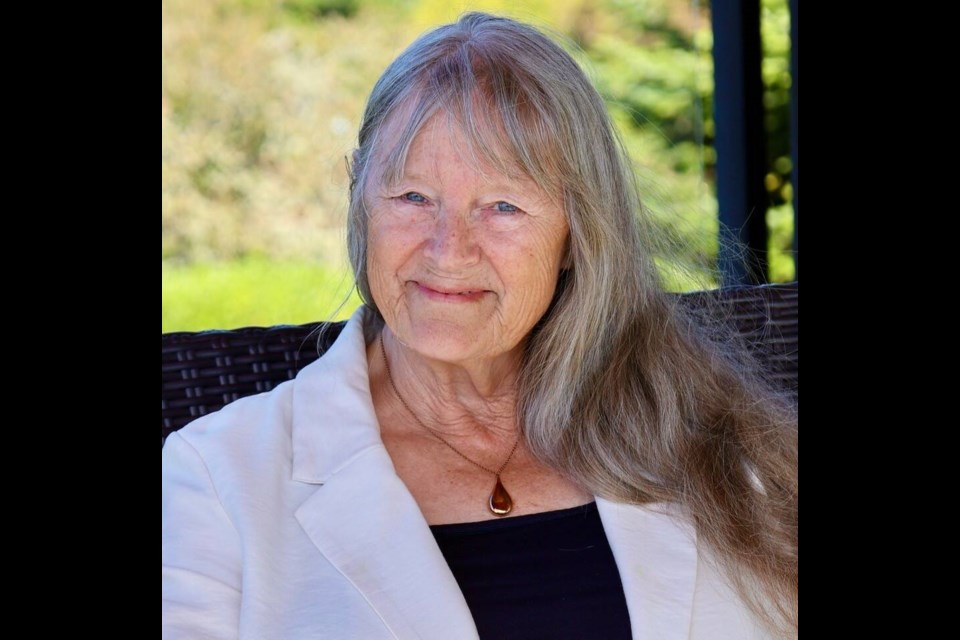Susan Belford
Are you associated with or running as part of a slate? If so, which one?
Do you live in the municipality where you are running, and if so, for how long? If not, what is your connection to that community?
What is your occupation, and for how long?
Tell us about your previous elected and/or community experience.
Over the years, I have participated on many committees advising 3 different municipal councils— most recently, Sooke’s Land Use and Development Committee 2021-2022. Before coming to Sooke in 2019, I was active with the Mount View Colquitz Community Association in Saanich and spearheaded an event called “The Uptown Corridor: From Nowhere Special to Someplace Great”, recommendations from which influenced District policy. Since moving to Sooke I’ve been focusing on effective community responses to climate change. Since post-COVID loosening of restrictions, I have become one of a cadre of fundraising assistants in the cause of a new seniors’ centre for Sooke.
Why are you running? What’s your motivation?
As Sooke’s population climbs above 15,000, our town is at a crossroads. Recent rapid growth has increased traffic congestion and emissions, stressed infrastructure, and changed its very look and feel. What we do now—how and where we choose to develop, what we choose to protect, and how we prepare as a community for a changing climate— will affect Sooke for a long time to come. I’d like to help make sure that the District of Sooke chooses actions that will benefit everyone who lives here, increasing community resilience, strength and safety over the long term.
What are your top three issues?
Transportation, local economy, and truly affordable housing are linked issues directly relating to climate. Sooke’s highest carbon emissions stem from cars and houses. Recent massive housing development outpaced local economic growth. With few job opportunities in town, residents commute to larger centres, generating heavy congestion twice daily on highway14 driving up carbon emissions. Fully implementing Sooke’s Transportation Master Plan and building the local economy, will make it possible for people to choose to live, shop AND work in Sooke, travelling car free if they choose. Homes in Sooke’s new developments are expensive; let’s create truly affordable (1/3 income) homes now.
What’s your vision for your community in 25 years?
Living in partnership with T’Sou-ke First Nation, surrounded by forests and farms, Sooke’s small, dense, walkable core houses an economy of healthy local businesses. Residents in the core enjoy zero carbon homes and find day-to-day needs, including solitude in nature, within an easy walk. Everyone has a safe place to live. Outside the core, neighbourhoods each carry their own unique brand of Sooke-ness while enjoying local-serving groceries, child-care facilities, community food gardens; parks and trails connecting them with other neighbourhoods and the core. While Sooke’s winding roads have at least one sidewalk and bike-lane many pedestrians and riders never need to use the roadway. Homes harvest rainwater, and stormwater is directed into bio swales and rain gardens instead of storm drains. Sooke Harbour is clean.
What’s one “big idea” you have for your community?
Sooke Council needs to act to build community resilience for the long term, taking multiple actions to ensure people’s safety and wellbeing while increasing community readiness for impacts of climate change. A commitment to truly affordable, low-carbon housing with electric heating and cooling; creation of transportation networks that support less car use; building the local economy to allow people to choose to work in the town where they live; protecting and preserving Sooke’s forests, creeks, and harbour. All these will serve the big idea of a strong, safe community enduring into the next century connected to nature, in which all residents have secure homes, healthy food, access to healthcare, learning and an opportunity to prosper.



